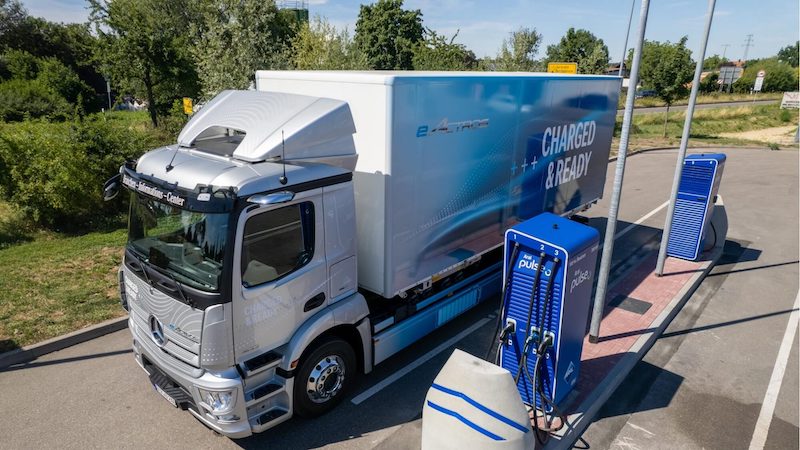Aral puts Europe’s first loading corridor into operation
BP subsidiary and gas station operator Aral has inaugurated the first charging corridor for electric trucks in Europe – in Germany. With a total of eight charging stations, each with 300 kilowatts, it should primarily enable long-distance transport.
We still have a lot to do to achieve our climate goals. But it is already clear today that we will have to filter CO2 out of the atmosphere in the long term. But the elimination of emission sources remains a supreme discipline. This also applies to the transport sector.
Because a lot of greenhouse gases are produced when goods are transported. Meanwhile, the reason the sector hasn’t gone green yet is because of infrastructure. Because electric trucks often have to make charging stops. But that only works if there are also corresponding charging stations that charge the batteries to 80 percent in record time.
Aral charging corridor with fast charging options for electric trucks
A project that wants to make a green future possible has now reached another milestone. The focus was on the Rhine-Alpine Corridor, a route over 600 kilometers through Germany. Because this corridor now has dozens of quick charging options for electric trucks.
With 300 kilowatts, a further 200 kilometers of range are possible after 45 minutes. Behind it is the gas station operator Aral, at whose stations the new charging infrastructure is located. In addition to the actual charging, drivers have access to showers, toilets and a gastronomic offer
The first charging station is not far from Stuttgart, the last east of the Dutch border. With two further stations, the first project of its kind will then find its final expansion in the next six months.
The future will be determined by electromobility
Initial forecasts assume that by 2030 around 270,000 medium and heavy vehicles with battery drives will be on the road – in Europe alone. But according to the estimate, it also needs 140,000 public charging points for these vans and trucks.
It is hardly surprising that a mineral oil company sees a future here. Nevertheless, it remains exciting to see to what extent the competition will follow suit in the coming years and to what extent the industry can influence the adaptation of electromobility.
Also interesting:



